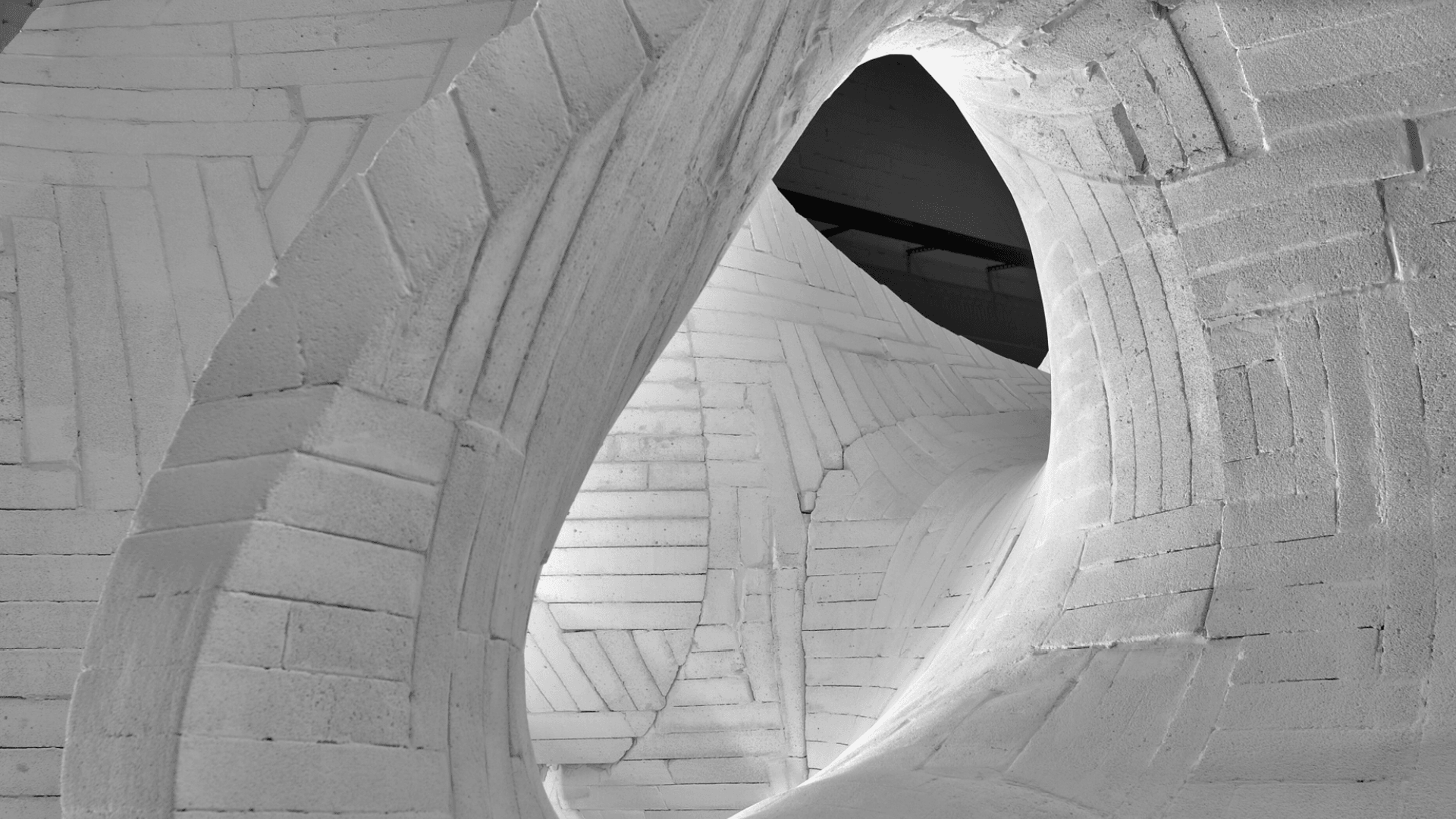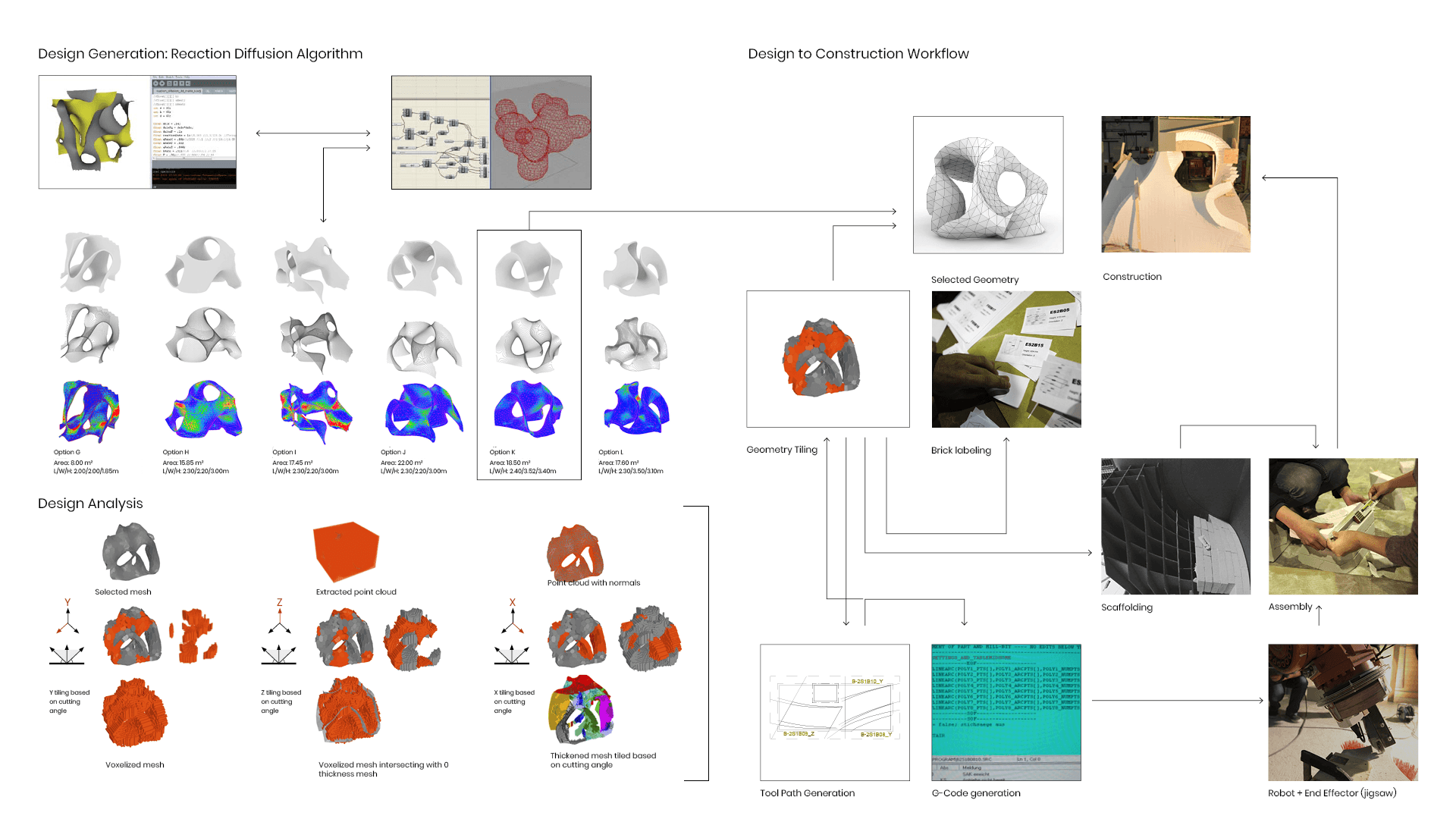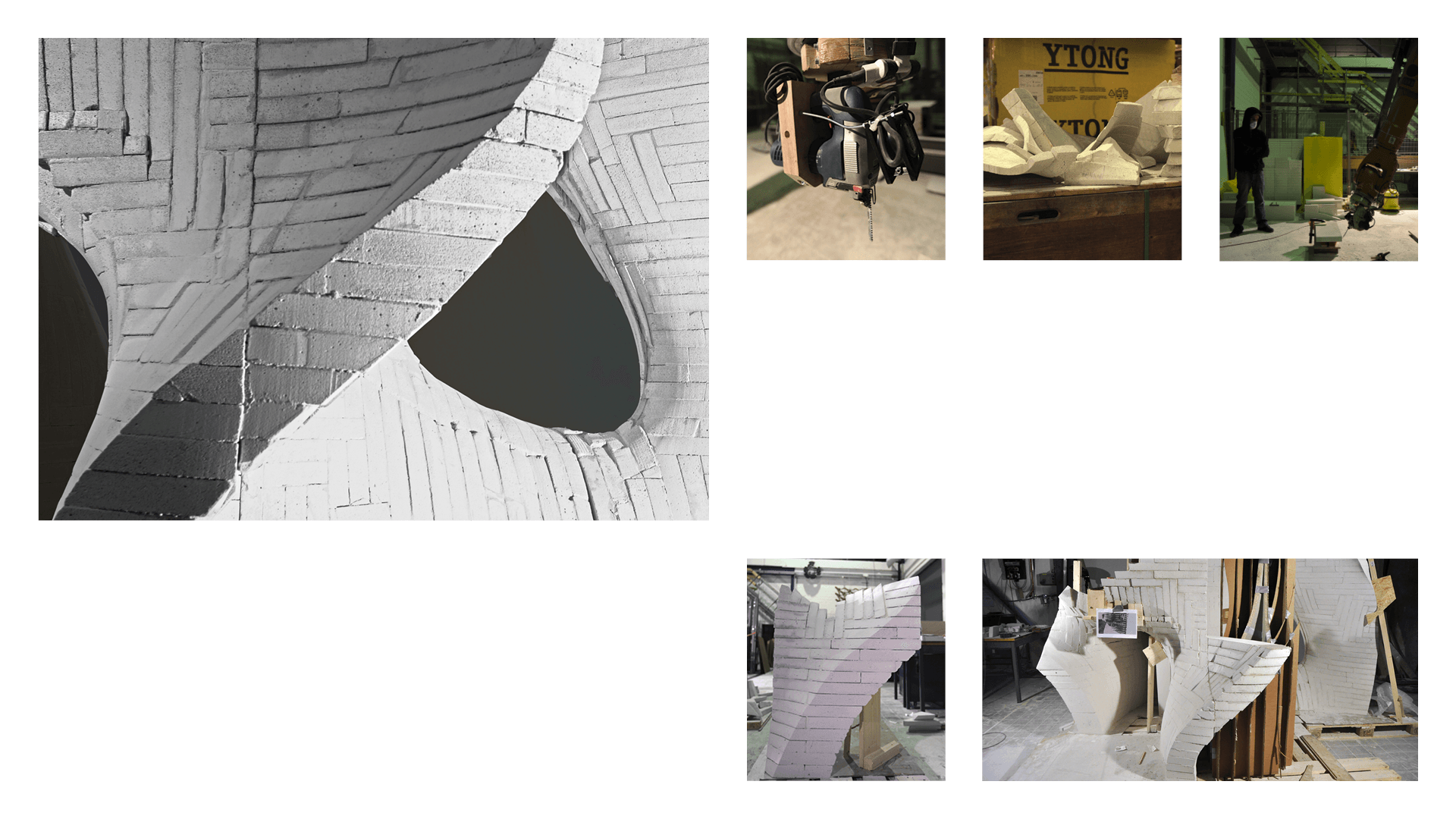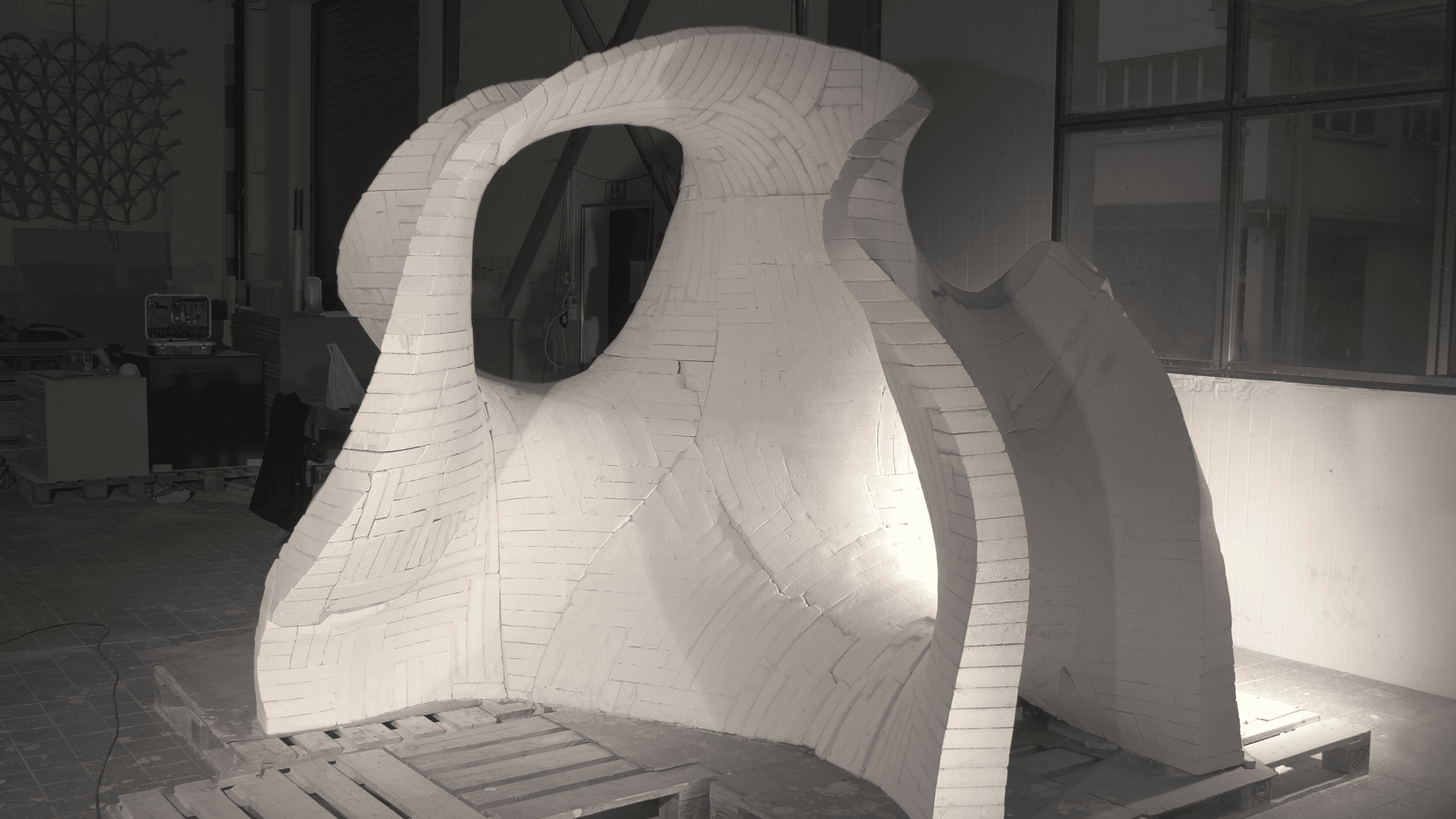Brickolage
Type:
Research Project
Location:
ETH Zurich / Chair for Computer Aided Architectural Design
Collaborators:
Manuel Kretzer, Tom Pawlofsky, Matthias Bernhardt, Miro Roman
Keywords:
Generative Design, Digital Stereotomy, Robotic Fabrication, Reaction Diffusion, Computational Design, Ytong
Date:
2012
Status:
Completed
Description: The project was developed with the aim to explore the relationship between design, various methods of generative computer modeling, the importance of materiality (in this case Ytong - aerated concrete) in the digital age and the physical representation of information using CAD/CAM devices (in this case a Kuka robot). The brief required for thinking beyond Parametrization and exploring the computer as a tool for generating an aesthetically appealing structure, which couldn’t be done manually. The design concept was based on a Reaction-Diffusion algorithm, programmed in Processing, in order to create a three-dimensional self-standing structure. Design was adjusted towards a voxelization of the structure, due to the limited cutting-angle of the robot (45°), a simpler setup process and a more homogeneous and smoother surface.
The orientation of the 1148 individual bricks was adjusted depending on the overall curvature of the shape. The resulting elements were then intersected with the main geometry and grouped into several modules depending on load and constructability. Fabrication with the six-axis robot was developed and continuously improved - jigsaw, specialized blades and clamping mechanisms. The final structure consisted of six separated blocks Each block was built manually by gluing digitally fabricated bricks together. 350 kg of specialized Ytong glue plus an additional 50 kg of strong cement glue were used.




